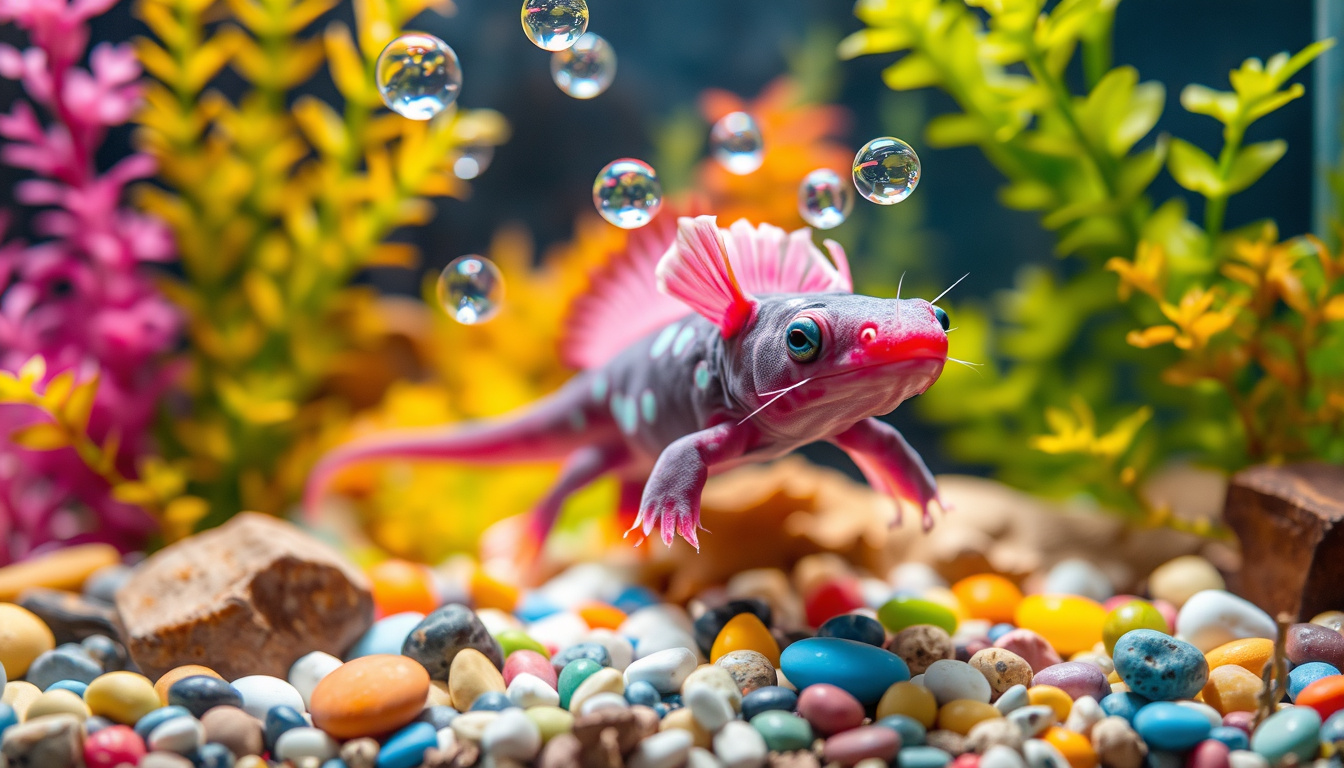Are you intrigued by the enchanting world of axolotls?
These unique aquatic creatures, known for their adorable smiles and vibrant colors, have captured the hearts of many.
In the journey of mastering axolotl rearing, you’ll learn all about their fascinating biology, essential care needs, and the secret to creating a thriving habitat.
This guide will walk you through everything you need to know to ensure your axolotl not only survives but truly thrives in your care.
From setting up the perfect tank to understanding their dietary requirements and health issues, get ready to embark on an exciting adventure into the art of axolotl rearing!


Common Health Issues in Axolotls and How to Prevent Them
When it comes to axolotl rearing, being aware of common health issues can make a significant difference in ensuring the longevity and well-being of these fascinating creatures.
Axolotls, known for their regenerative abilities, can still be susceptible to various ailments if not cared for properly.
One of the biggest issues is poor water quality, which can lead to bacterial infections and stress.
Regular water testing for parameters like pH, ammonia, and nitrate levels is essential to maintain a safe environment.
Another common problem is parasites, often introduced through unclean tanks or contaminated food.
Ensuring that you provide high-quality, live food and keeping the tank clean can help mitigate these risks.
Lastly, axolotls can also suffer from injuries, particularly to their delicate gills, especially in tank setups with sharp or rough surfaces.
Using smooth substrate and providing plenty of hiding spaces can help reduce the chances of physical harm.
By staying informed and proactive in your axolotl rearing practices, you can help keep your amphibious pets healthy and thriving.
Best Practices for Axolotl Breeding
Axolotl rearing can be an exciting and rewarding hobby, but it also requires understanding and dedication.
To best support your axolotl breeding efforts, start with a healthy breeding pair, ensuring they are at least 6 months old and of size for maturity.
During the breeding season, provide optimal water conditions—maintaining a temperature of around 16-20°C (60-68°F) is crucial, as warmer temperatures can stress your axolotls.
Create a spacious tank with plenty of hiding spots, such as plants and decorations, to make them feel secure.
Once the females lay their eggs, gently remove them to a separate hatching tank to protect them from being eaten.
Feeding the hatchlings is essential for successful axolotl rearing; consider using live food like baby brine shrimp or finely crushed pellets.
Regularly monitor water quality and perform partial water changes to keep the environment clean.
By following these best practices, you can enjoy the fascinating experience of axolotl breeding and contribute to the growth of this unique species!
Frequently Asked Questions
What should I include in an axolotl habitat?
An axolotl habitat should include a spacious aquarium with a minimum of 20 gallons of water, a filter to maintain water quality, live or artificial plants for cover, appropriate substrate such as sand or smooth gravel, and a water heater if keeping the water temperature within optimal range (60-68°F).
What do axolotls eat?
Axolotls are primarily carnivorous and thrive on a diet that includes high-quality pellets, earthworms, brine shrimp, and small feeder fish.
It is essential to provide a varied diet to ensure balanced nutrition.
How can I tell if my axolotl is healthy?
Healthy axolotls are active, have clear eyes, smooth skin, and exhibit a strong appetite.
If you notice unusual lethargy, changes in skin texture, loss of appetite, or any signs of distress, it may indicate health problems.
What are some common diseases in axolotls?
Common health issues in axolotls include fungal infections, bacterial infections, and the ‘cloudy eye’ condition.
Maintaining clean water, proper temperature, and a nutritious diet can help prevent these issues.
Is breeding axolotls difficult?
Breeding axolotls can be challenging, but with proper knowledge, it can be successful.
You need to mimic their natural seasonal conditions, provide separate spaces for mating and laying eggs, and ensure the right water parameters for the eggs to thrive.
[center][/center]
[center][color=rgb(10, 10, 10)][highlight=rgb(255, 248, 231)] [/highlight][/color][color=rgb(10, 10, 10)][highlight=rgb(255, 248, 231)]As an Amazon Affiliate,[/highlight][/color][color=rgb(10, 10, 10)][highlight=rgb(255, 248, 231)] [/highlight][/color][color=rgb(10, 10, 10)][highlight=rgb(255, 248, 231)]Savvy Keto makes a commission[/highlight][/color][color=rgb(10, 10, 10)][highlight=rgb(255, 248, 231)] [/highlight][/color][color=rgb(10, 10, 10)][highlight=rgb(255, 248, 231)](at no extra cost to you)[/highlight][/color][color=rgb(10, 10, 10)][highlight=rgb(255, 248, 231)] [/highlight][/color][color=rgb(10, 10, 10)][highlight=rgb(255, 248, 231)]on purchases you make[/highlight][/color][color=rgb(10, 10, 10)][highlight=rgb(255, 248, 231)] [/highlight][/color][color=rgb(10, 10, 10)][highlight=rgb(255, 248, 231)]thru links on this site.[/highlight][/color][/center]

